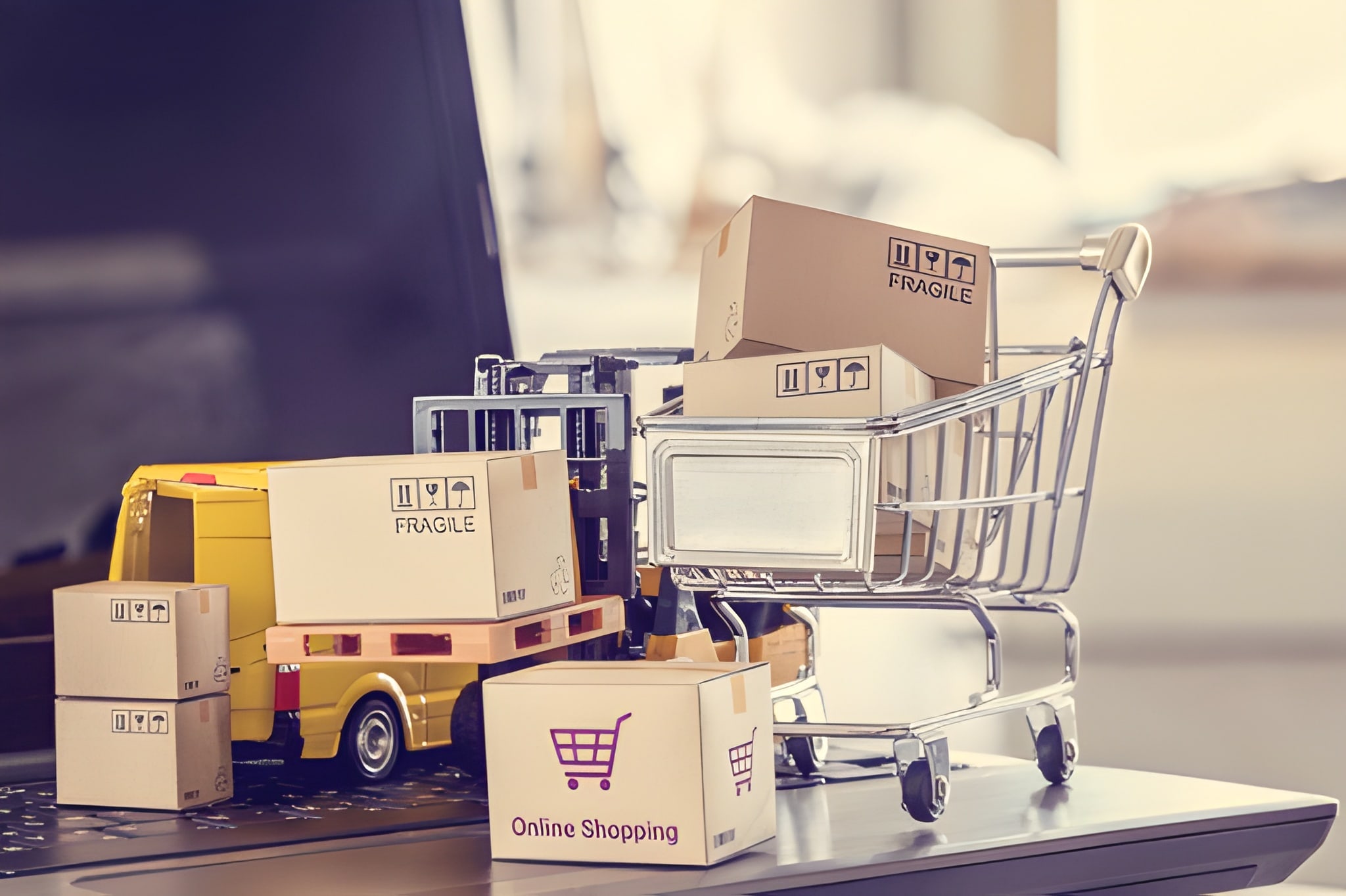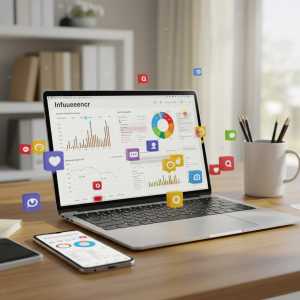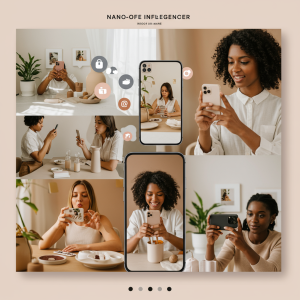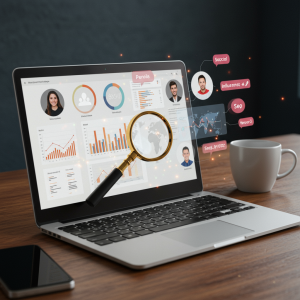B2B Influencer Marketing: Tactics to Drive Leads and Build Thought Leadership

In today’s ultra-competitive B2B landscape, traditional advertising alone often struggles to build the trust and credibility required for complex sales cycles. Enter B2B influencer marketing: a strategy that leverages respected industry voices to amplify your message, nurture relationships, and accelerate lead generation. Unlike consumer influencer tactics focused on quick conversions, B2B influencer programs emphasize thought leadership, peer validation, and long-term engagement. This comprehensive guide will explore how to define B2B influencers, select the right partners, design campaigns that resonate with professional audiences, and measure results to ensure a strong return on investment. By the end, you’ll understand how to harness the power of credible voices in your niche to position your brand as an authority and drive high-quality leads through every stage of the buyer’s journey.
What Is B2B Influencer Marketing?

B2B influencer marketing is the practice of collaborating with industry experts, analysts, thought leaders, or respected practitioners to co-create content and endorse products or services for a professional audience. These influencers often have established credibility in verticals like technology, finance, manufacturing, healthcare, or professional services. Their insights, case studies, and recommendations carry more weight among decision-makers than standard branded content. At its core, B2B influencer marketing is about building authentic relationships that benefit both parties: brands gain access to niche audiences and trust, while influencers receive exclusive data, product access, or financial compensation. Campaign formats range from webinars, whitepapers, and co-authored articles to conference appearances, video interviews, and social media takeovers. The key difference from B2C lies in the lengthier sales cycles, higher average deal values, and emphasis on education and expertise over impulse buying.
Benefits of B2B Influencer Campaigns
When executed effectively, B2B influencer marketing offers several powerful advantages. First, it accelerates brand trust: endorsements from credible industry experts can reduce perceived risk for prospects evaluating complex solutions. Second, it expands your reach into highly targeted professional networks that are otherwise difficult to penetrate. Influencers often have loyal followings on LinkedIn, specialized forums, or industry associations. Third, co-created content—such as technical whitepapers or deep-dive webinars—drives higher engagement and longer dwell times, critical for educating buyers during multi-stage purchasing processes. Fourth, it enhances SEO authority: high-quality backlinks from respected blogs and publications boost your domain reputation. Finally, by intertwining your brand with an influencer’s thought leadership, you stay top of mind throughout lengthy decision cycles, nurturing warm leads toward conversion over time.
Identifying the Right B2B Influencers
Selecting the ideal influencers is perhaps the most crucial step. Start by defining your target audience segments and the specific challenges they face. Next, map out thought leaders who regularly publish solutions or insights in those areas. Use social listening tools, LinkedIn searches, and industry publication bylines to compile a list. Evaluate potential partners based on relevance (topic alignment), reach (audience size and engagement rate), and resonance (authentic connection with followers). Scrutinize their content quality—are they data-driven, transparent about partnerships, and respectful of professional standards? Review prior collaborations to ensure they maintain brand integrity. Finally, verify their audience demographics and engagement metrics through analytics platforms. Aim for a balanced mix of macro-influencers (with broad reach) and micro-influencers (with highly engaged niche communities) to maximize both scale and depth of impact.
Choosing the Best Platforms and Formats
B2B influencers operate across multiple channels, each suited to different stages of the buyer’s journey. LinkedIn remains the primary hub for professional networking, thought leadership posts, and group discussions. Twitter is ideal for real-time insights, industry commentary, and live event coverage. Industry-specific forums or Slack communities offer intimate spaces to host ask-me-anything (AMA) sessions or Q&A panels. Webinars and virtual conferences, co-hosted by your brand and influencers, deliver deep educational value and generate registrants for your nurture campaigns. Meanwhile, long-form content such as eBooks or whitepapers co-authored with experts can serve as high-value gated assets. Video interviews on YouTube or your website strengthen personal connections, while podcasts allow for in-depth conversations that prospects can consume on-the-go. Choose a mix of formats that align with your audience’s content consumption habits and the complexity of your solution.
Developing Your B2B Influencer Strategy
A well-structured strategy ensures both parties benefit and deliver measurable results. Begin with clear objectives: Are you aiming to generate marketing-qualified leads (MQLs), boost webinar attendance, improve brand sentiment, or accelerate deal velocity? Establish key performance indicators (KPIs) such as registration rates, content downloads, engagement time, social shares, and pipeline attribution. Next, define the scope of collaboration—whether it’s a single webinar, a multi-month content series, or a co-branded research study. Draft an influencer brief that outlines brand guidelines, key messages, audience personas, timeline, and deliverables. Agree on compensation—this could be flat fees, performance-based bonuses tied to lead quality, or reciprocal exposure in the influencer’s channels. Build a communication cadence with regular check-ins and feedback loops to ensure content aligns with expectations. Finally, integrate influencer-generated content into your broader marketing funnel by nurturing leads through email workflows, retargeting ads, and sales outreach scripts that reference the campaign.
Measuring Success: KPIs and Metrics
Rigorous measurement is critical to demonstrate ROI and optimize future campaigns. Track both leading and lagging indicators. Leading metrics include content engagement rates (click-through rates, time on page), social media shares and comments, event registrations, and newsletter sign-ups. Lagging metrics tie directly to revenue, such as marketing-influenced pipeline, deal velocity improvements, average deal size lift, and closed-won revenue attributed to influencer touchpoints. Use UTM parameters and unique tracking links for each influencer asset to isolate performance. Leverage marketing automation and CRM systems to record influencer-sourced leads and map them through your sales funnel. Conduct qualitative surveys or post-webinar polls to gauge brand perception shifts. Share performance dashboards with influencers to build transparency and strengthen long-term partnerships. Iteratively refine your approach by analyzing which formats, topics, and influencers drive the highest-value outcomes.
Case Study: A Successful B2B Influencer Campaign
TechSolutions Inc., a mid-sized SaaS provider, partnered with three industry analysts to co-create a virtual roundtable on cloud security best practices. The brand invited 500 target prospects via LinkedIn Ads, resulting in a 35% registration rate. During the live event, participants engaged in real-time polls and Q&A, yielding a 50% attendance-to-completion ratio. Post-event, TechSolutions gated the on-demand recording behind a lead capture form, generating 120 high-quality MQLs. Influencer posts on LinkedIn and Twitter drove an additional 800 organic views and 200 new newsletter subscriptions. Within three months, the campaign influenced $450,000 in new pipeline opportunities, with an average deal size 15% higher than their typical sales cycle. This case underscores the importance of credible voices, interactive formats, and integrated nurture tactics in B2B influencer success.
Best Practices for B2B Influencer Partnerships

- Prioritize authenticity: Choose influencers whose voice aligns with your brand values and messaging style.
- Maintain transparency: Disclose sponsorships to preserve trust with professional audiences.
- Co-create content: Involve influencers early in ideation to leverage their expertise and ensure genuine perspectives.
- Provide value: Offer influencers exclusive data, early access to product features, or unique industry insights.
- Foster long-term relationships: Cultivate repeat collaborations rather than one-off promotions.
- Align incentives: Structure compensation around shared goals like MQL generation or webinar attendance.
- Optimize and iterate: Analyze campaign performance and refine targeting, formats, and messaging in real-time.
Conclusion
B2B influencer marketing offers a powerful avenue to differentiate your brand, build trust with professional audiences, and accelerate high-quality lead generation. By identifying the right experts, choosing effective formats, and measuring results against clear KPIs, you can integrate influencers into a scalable, repeatable strategy that fuels long-term growth. Remember, authenticity and mutual value creation lie at the heart of successful collaborations. Start small—pilot a single webinar or co-authored eBook—then expand your program as you learn what resonates. With thoughtful planning and execution, B2B influencer partnerships can transform your marketing funnel, strengthen thought leadership, and drive meaningful business outcomes in an ever-evolving digital landscape.





